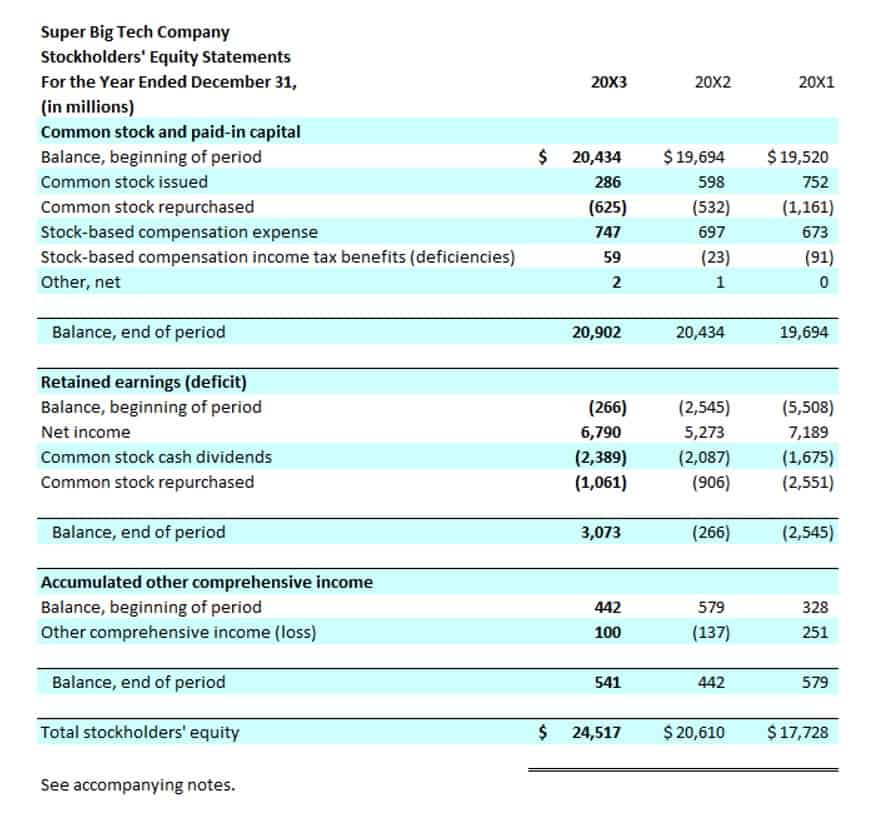Retained Earnings Formula: How to Get and Calculate It

On any company’s balance sheet, retained earning is always recorded under the shareholders equity. Since it is standardized, the accumulated income is reported as a separate item in the company’s balance sheet. To calculate retained earnings, you are required to add net returns to the retained earnings of the previous period. The company’s retained earnings calculation is laid out nicely in its consolidated statements of shareowners’ equity statement. Here we can see the beginning balance of its retained earnings (shown as reinvested earnings), the net income for the period, and the dividends distributed to shareholders in the period. Retained earnings play a key role in shareholders’ equity, representing internally generated funds available for strategic use.
Negative Retained Earnings Mean a Loss This Year
Shareholder equity represents the owners’ claim after liabilities are settled, with retained earnings as a significant component. As companies generate profits and retain them, these earnings strengthen shareholder equity, providing a buffer against financial volatility and enhancing overall value. Adjustments to retained earnings can occur due to changes in accounting policies or corrections of prior period errors, as guided by GAAP or IFRS. These adjustments are recorded directly in retained earnings to provide an accurate reflection of https://ip.remdel.com.ng/going-concern-concept-in-accounting-meaning/ a company’s financial position. For example, correcting a revenue recognition error from a previous year would adjust retained earnings, ensuring compliance and enhancing transparency. Cash dividends involve an outflow of cash, reducing both assets and retained earnings.
- The balance in dividends, revenues and expenses would all be zero leaving only the permanent accounts for a post closing trial balance.
- The strategic implications of retained earnings adjustments are significant.
- You will also need to compare with other alternative investments to know whether they are performing better than the rest.
- This strategic reinvestment not only fosters growth but also mitigates risks by reducing dependency on a single revenue stream.
- At the end of each fiscal year, businesses perform accounting steps to prepare their financial records for the next period.
- If the balance of the retained earnings account is negative it may be called accumulated losses, retained losses, accumulated deficit, or similar terminology.
- Retained earnings are related to net (as opposed to gross) income because they reflect the net income the company has saved over time.
Beginning Balance
The tax implications of retained earnings and dividends are a crucial consideration for both companies and shareholders. Retained earnings, being reinvested into the business, do not immediately trigger tax liabilities for shareholders. This allows companies to grow their capital base without the immediate burden of additional taxes, potentially leading to greater long-term value creation.

Retained Earnings in Financial Statements
- This formula gives you valuable insights into your company’s financial health.
- Retained earnings also play a crucial role in assessing a company’s ability to fund future projects and weather economic downturns.
- It’s the number that indicates how much capital you can reinvest in growing your business.
- A strong equity position, bolstered by consistent profitability and prudent retention of earnings, can lead to favorable borrowing terms and increased investor confidence.
- Calculating NCI involves determining the portion of a subsidiary’s net income and equity attributable to minority shareholders.
Transfer pricing must align with the arm’s length principle to avoid tax liabilities and regulatory scrutiny. To calculate the increase in a business’s retained earnings, you must first divide the specific accounting period’s retained earnings against the beginning retained earnings of the same period. Then multiply this number by 100 to find out the percentage increase of your earnings within that period. Understand the nature of retained earnings, an essential equity account reflecting a company’s reinvested profits and financial strength. Although net income and retained earnings are linked, they differ significantly in function, placement in financial statements, and what they reveal about the company. The company forgets to record revenue of $ 5,000, which means that last year’s revenue is understated.
- The retained earnings account is never closed and will always maintain a balance even if it has a deficit.
- Retained earnings represent the cumulative profits of a business that have not been distributed to its shareholders as dividends.
- Retained earnings are directly influenced by a company’s financial performance and its profit distribution decisions.
- According to the provisions in the loan agreement, retained earnings available for dividends are limited to $20,000.
- Understanding consolidated retained earnings and intercompany transactions is essential for accurate financial reporting in corporate groups.

Investors often scrutinize this ratio to assess a company’s ability to create value for its shareholders. Dividends play a significant role in shaping a company’s retained earnings. When a company decides to distribute dividends, it essentially reduces the amount of profit that can be reinvested back into the business.
- Retained earnings provide a much clearer picture of your business’ financial health than net income can.
- During the fiscal year 2024, Alpha Solutions Inc. reported a net income of $75,000, as detailed on its income statement.
- The company forgets to record revenue of $ 5,000, which means that last year’s revenue is understated.
- Consider a Canadian manufacturing company that has consistently reinvested its retained earnings into expanding its production facilities.
- The recording of retained earnings primarily occurs through closing entries at the end of an accounting period, which transfer temporary account balances to permanent accounts.
- Several elements can influence a company’s retained earnings, shaping its financial landscape and strategic direction.
At the end of each accounting period, businesses close out their revenue and expense accounts, summarizing them into a temporary account known as the Income Summary Account. The net balance (revenue – expenses) of this account is then transferred to Retained Earnings through closing entries. On the statement of retained earnings, we accounting retained earnings reported the ending balance of retained earnings to be $15,190.

Dear auto-entrepreneurs, yes, you too have accounting obligations (albeit lighter!). From understanding the applicable rates, to choosing the right regime and reporting, we cover everything you need to navigate the world of VAT with confidence. Find out how this alternative financing method works, with its many advantages. Interior Design Bookkeeping Discover 10 more comprehensive financial management solutions, with comparisons, reviews and key features.